Liberty Tower and the Guardian Spirits
Introduction
Text-to-speech Audio
The iconic tower of the National World War I Museum and Memorial is the focal point of the memorial grounds. Built as the Liberty Memorial between 1923 and 1926, the tower stands 217 feet above the courtyard. The Flame of Inspiration at the top of the tower was intended to emulate fire through light and steam effects. The four guardian spirits are located near the top of the tower, facing the four corners of Kansas City, and were designed and carved by sculptor Robert Ingersoll Aitken. The guardians were hoisted into place in 1925, during the tower's construction, and have remained in constant watch over Kansas City ever since. The base of the tower is engraved with the message, "In honor of those who served in the World War in defense of liberty and our country."
Images
Liberty Tower of the National World War I Museum and Memorial (with sphinxes and Memory Hall in picture)
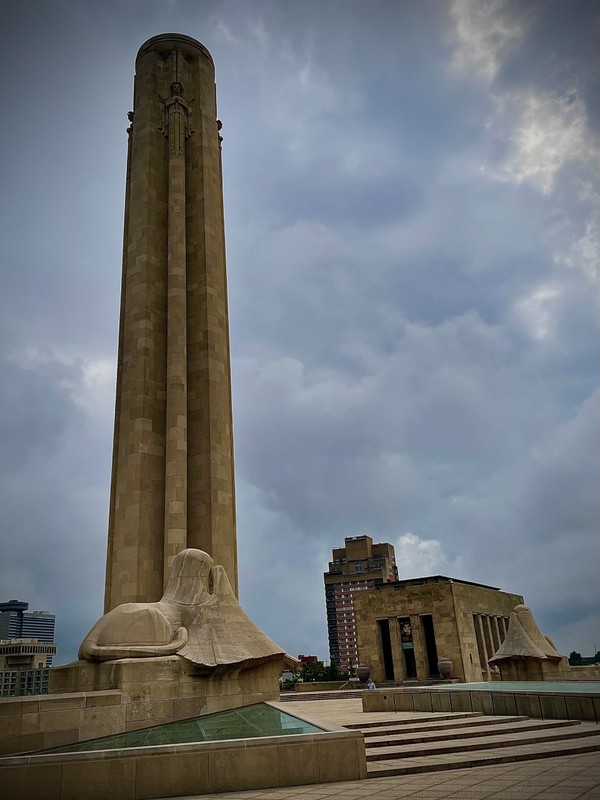
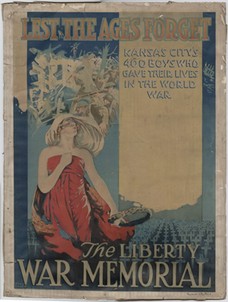
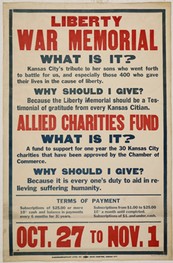
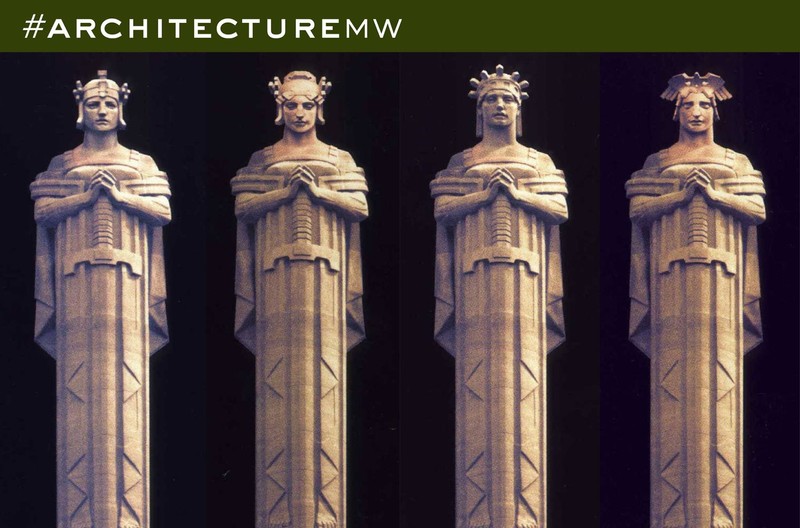
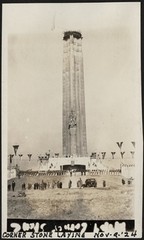
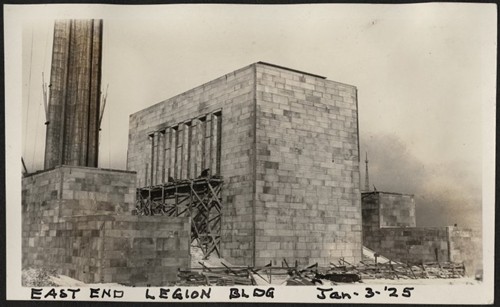
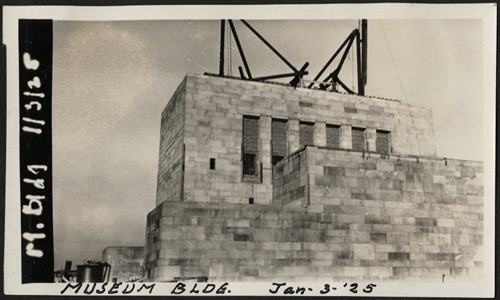
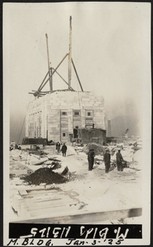
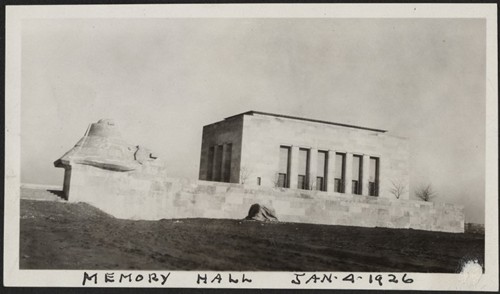
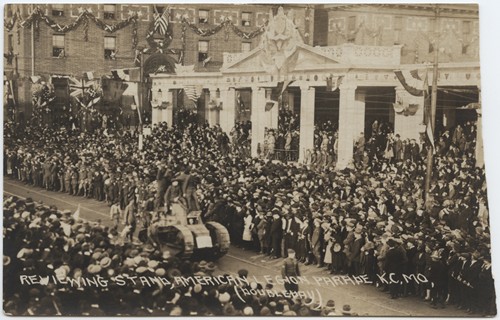
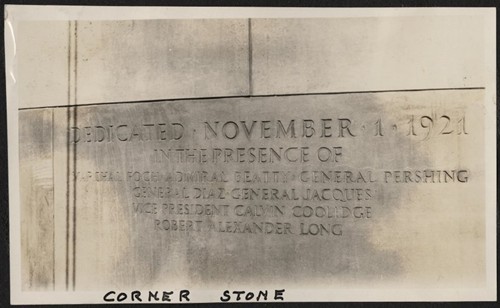
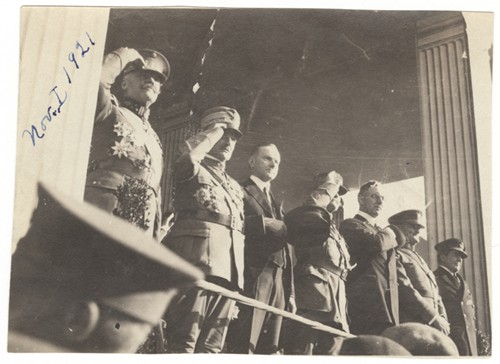
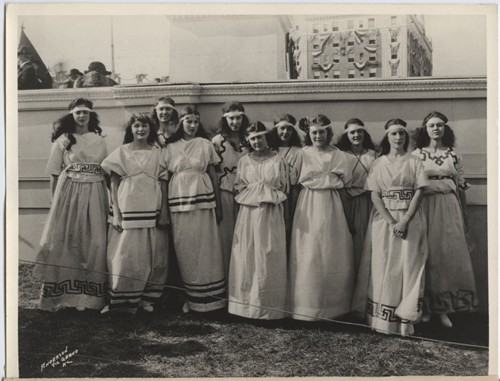
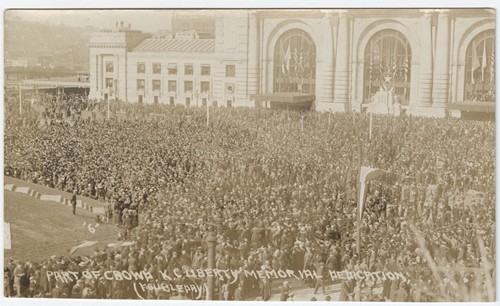
Backstory and Context
Text-to-speech Audio
At the end of World War I, enthusiastic Kansas City citizens joined efforts to fund and build a monument that would honor those who fought and died in the war. The Liberty Memorial Association began in 1918 and public fundraising between October 27 and November 5, 1919, raised over $2 million for design and construction. The association then organized a competition among architecture firms in the Kansas City area, as well as inviting five other distinguished firms from across the country. One of the firms included Harold Van Buren Magonigle from New York. The board selected Magonigle's design for its "commanding dignity, power, and beauty" and the belief that the design would be respected for many generations. With the site, architect, and funds arranged, a dedication ceremony was held in Kansas City on November 1, 1921 in conjunction with the third American Legion convention. Ceremonies included a parade, aerial acrobatics, thousands of paper poppies dropped from airplanes, and the invitation of the five major Allied commanders: General John J. Pershing of the U.S. Army, Admiral David Beatty of the Royal Navy, Marshal Ferdinand Foch of the French Army, General Armando Diaz of the Italian Army, and General Alphonse Jaque of the Belgian Army. Vice President Calvin Coolidge attended as an honored guest.
Construction on the memorial was complete in 1926, and the monument was formally dedicated on November 11, 1926, by President Coolidge, who had attended the site dedication five years earlier.
"It is with a mingling of sentiment that come to dedicate this memorial. Erected in memory of those who defended their homes and their freedom in the World War, it stands for service and all that service implies. Reverence for our dead, respect for our living, loyalty to our country, devotion to humanity, consecration to religion, all of these and much more is represented in this towering monument..." - President Calvin Coolidge, Nov. 11, 1926
The tower itself stands at 300 feet from the bedrock below the city, which required construction teams to dig nearly six stories to reach. From the Memorial's courtyard, the tower stretches 217 feet into the air. The tower is 43 feet in circumference at its buried base, 36 feet in circumference at the courtyard, and 28 feet in circumference at the top, where the observation deck and Flame of Inspiration are located. The flame's illusion is created by light steam. The lights were shut off during the Second World War in case of air raids and during efforts to make the memorial more economical. Today, the lights are lit at night, and the surrounding park is open to visitors who are encouraged to see the memorial during this time. Entrance to tower's elevator and stairs is behind an ornate bronze door on the north side. The design of the door is composed of alternating panels that depict a bald eagle and the monogram of the Liberty Memorial Association.
The guardian spirits at the top of the tower were conceptualized by Magonigle and designed and carved by sculptor Robert Ingersoll Aitken. The head and shoulders of each statue are a single piece of stone, each weighing around 11.5 tons. Each guardian is 40 feet tall and holds a sword, representing Sacrifice, Patriotism, Honor, and Courage. Sacrifice faces northwest with a winged star on her forehead. Her eyes are closed in memory of the fallen. Patriotism faces southwest and a crown of civic duty. Courage, wearing a helmet today, was originally meant to face northeast and Honor, wearing a crown of laurels and bowing her head in respect for those that service to their country, was to face southeast. However, workers mistakenly placed Honor and Courage in the wrong positions. The guardians were hoisted into place in 1925 during construction of the tower.
Sources
Magonigle, Howard Van Buren . Perpetuating the American Ideal: The Liberty Memorial in Kansas City, Missouri. Kansas City, MO. Liberty Memorial Association , 1941.
""The President's Address." Kansas City Star (Kansas City) November 11th, 1926.
Donovan, Derek. Lest the Ages Forget: Kansas City's Liberty Memorial . Kansas City, MO. Kansas City Star Books, 2001.
McPherson, J. E.. The Liberty Memorial in Kansas City, Missouri. Kansas City, MO. Liberty Memorial Association, 1929.
Nikki Dean, KU MUSE Graduate Student (AY 23), personal photograph taken 03 AUG 23
